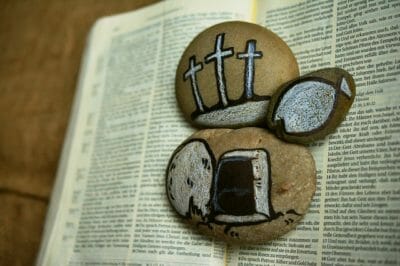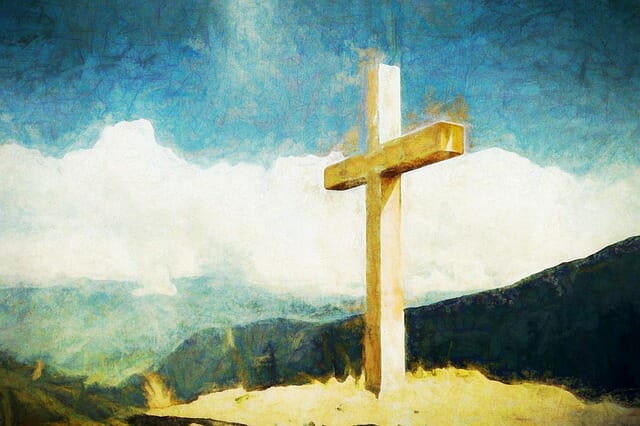When there’s no one left in the living world who remembers you, you disappear from this world. We call it the “Final Death.”
— Héctor, “Coco” (2017)
He’s not really dead, as long as we remember him.
—Dr. McCoy, “Star Trek II: The Wrath of Khan” (1982)
The Worship of the Dead
From Asia to Rome, the ancient pagan world worshipped the dead. More specifically, families worshipped their dead ancestors. That’s because the ancients believed that man was by nature potentially divine. In this scenario, when you die … you “fly away” from your earthly prison, land in a heavenly airport and then become a deity when you get off the plane (or something like that). And so, at death every human becomes a god. But these “family” gods had a narrow scope of influence and power. They belonged, almost exclusively, to their own families, and that’s where they worked out their godhood. They protected their own families, as well as any family property and family land. They especially guarded the family home.
In order to maintain this protection and care, the still-living family had to render its ancestors due respect and worship. The central ritual of that worship was a communion meal. At stated times, each family (or its proper representative) had to bring a sacrificial meal to the tomb of its ancestors. These meals metaphysically sustained the departed spirits in a relatively happy existence. The dead would continue to look after the living. But should the family ever fail in its duties, should they ever let the ritual meals lapse, the dead would become restless and grumpy. If you agitated them enough, they might even leave their tombs and give you some trouble — haunting and terrorizing the negligent descendants.
Get Heirloom Audio’s Popular 2-CD Set, “Captain Bailey’s Heir,” For FREE! Use Coupon Code LTA2
We can see strong echoes of this worldview in Pixar’s Coco (2017). The film uses the Mexican holiday Día de Muertos, the Day of the Dead, as its temporal setting and thematic backdrop. In the story, we follow the young boy Miguel Rivera as he comes to terms with the meaning of the holiday and the spiritual reality that undergirds it. The ofrendas … the images, memorabilia and food that families set up to remember the dead, loom large in the story, but Miguel and his family see them, not as worship, but merely as a means of showing respect for the departed and maintaining communion with them. The dead, however, know that their own continued existence depends upon the memories of the living.
And so, it follows that if the living ever do forget a dead family member, that family member vanishes completely from all reality. At the end of the closing titles, Pixar acknowledges the movie’s roots in Mexico’s “indigenous culture” in the various Mexican cultures that pre-date the coming of the gospel. As you would expect from Pixar, there are very few references to Christianity in the movie Coco.
The Gospel and the Soul
The Christian gospel destroyed ancestor worship in the West. It’s easy to understand why. The gospel rejects the deity of man and with it, the pagan concept of the continuity of being. God is God, creation is creation and there is no point where the two blend. Even in Christian doctrine, the Son’s incarnation, the human and divine remain absolutely distinct. Jesus is truly God and truly man, but His two natures exist “without confusion, without change, without division, without separation.”
 The soul, then, is part of creature-hood. The human soul endures, not because of some innate deity or immortality quality of its own, but because the Creator God upholds its existence and insures its distinction and integrity until the Last Judgement. But lasting until judgement day is not everlasting life or eternal blessedness. Only those who trust in Jesus have everlasting life:
The soul, then, is part of creature-hood. The human soul endures, not because of some innate deity or immortality quality of its own, but because the Creator God upholds its existence and insures its distinction and integrity until the Last Judgement. But lasting until judgement day is not everlasting life or eternal blessedness. Only those who trust in Jesus have everlasting life:
“He who believes on the Son has everlasting life: and he who does not believe on the Son shall not see life; but the wrath of God abides on him” (John 3:36).
Jesus Himself defines the nature of eternal life in His high priestly prayer to His Father: “And this is life eternal, that they might know thee the only true God, and Jesus Christ, whom thou hast sent” (John 17:3). Eternal life is the true, loving and covenantal knowledge of God in and through His Son, Jesus Christ. The eternal alternative is hell for both soul and body. Serious business.
Enlightenment Soul Killers
The Enlightenment tried to restore the autonomy and immortality of individual soul while gently pushing God off to the side. From Descartes to Kant, Enlightenment thought set the autonomous human personality at the center of all things. “God” became the safety net and operational mechanism that guaranteed man’s self-knowledge and eternal blessedness. But beyond that, man could pretty much run things as he or she sees fit. Or so it seemed.
The world changed again when Darwin shredded the Enlightenment with tooth, fang and claw. And with the emergence of postmodern thought, man has run out of answers and perhaps even forgotten what the big questions actually were. Materialism reduces the soul to electro-chemical phenomena that end with the death of the body. Pantheism dumps the individual soul back into the “undifferentiated sea of divine essence” and the individual personality is lost forever, absorbed completely like a drop of water into the shoreless ocean.
In other words, the dead are dead. They are lost to the living forever. We can’t call them back; we will never see them again. This is a reality that humans avoid on both an instinctive and self-conscious level. We don’t want to think about death, especially our own.
‘He’s Alive in Our Hearts’
We find it in greeting cards and on tombstones. McCoy said it of Spock. More recently, in the movie Black List (2016), Cooper said it of agent Elizabeth Keene: “But we haven’t lost Elizabeth. We know exactly where she is.” With that, Cooper placed his hand on his heart. And so we’ve come full circle. The dead live as long as we remember them. But we are no longer talking about reality. We pretend that somehow our memories have some sort of mystical power to keep the dead alive, but it’s all metaphor, exaggeration and self-deception. Interestingly, postmodern secularism doesn’t even have pagan metaphysics and magic to provide a ray of hope to the living. Just the angst of existence and nothing more.
But it’s right here we must confess that Christians too, have often fallen short doctrinally in our understanding of the human soul and its salvation. Ask a small child or teenager who has grown up in the Christian church, “What does it mean to be saved?” and they likely will say, “I get to go to heaven and be with Jesus when I die.” Salvation becomes equivalent with justification and nothing more. Being “saved” means being dead first. Sometimes even the reality of Jesus’ whereabouts falls under this same gnostic misconception: “You ask me how I know He lives? He lives within my heart.”
Sorry, but that’s not the full gospel. And, at the end of the 20th century, “Ask Jesus into your heart” was the increasingly tired mantra that became a substitute for the very real gospel’s demand for repentance and faith in the living Lord, Jesus Christ.
The Gospel of Resurrection
At Easter we celebrate the resurrection of Jesus Christ. Jesus of Nazareth, who died in the place of guilty sinners, really did come back to life. His brainwaves came back on line. His heart began to beat. His lungs filled with air. Strength returned to His muscles and warmth to His flesh. He got up and walked out of His tomb. This is history, not fable or myth or some upper-story Platonic experience. It is the basis of the true gospel. The resurrection of Jesus Christ in space and time assures us that:
- Jesus Himself kept God’s law perfectly. Of all Eve’s seed, He alone was without sin and guilt. Death had no claim on Him. And so He could become the Lamb, the innocent sacrifice, the just Man who could suffer in the place of the unjust.
- Jesus’ resurrection meant that His work as a penal substitute was complete. The Father received Jesus’ sufferings and death as full atonement for sin. For those who trust in Him, grace replaces God’s wrath.
- Jesus is God. Only God Himself could balance out the sins of the world. Only the living God could defeat death. Only God can save His people from their sins.
- Those who trust in Jesus have the benefits of His resurrection working within them (Rom. 6). This means newness of life right here and now as well as substantial victory over sin.
- The final goal of our salvation is the final Resurrection and the New Jerusalem that lies beyond (1 Cor. 15; Rev. 21). Together, we will share in Jesus’ resurrection. One day … one day in history … God will bring all His people together again in eternal life and joy.
Conclusion
In the true gospel, God calls us to trust in Jesus Christ, to believe that in His death and resurrection there is forgiveness of sins and eternal life. He promises us that because Jesus lives, we can walk in newness of life now and that in the last day He will raise us to resurrection life and glory. That means the separation of soul and body isn’t permanent and old man death doesn’t have the last word.
Bottom Line: Love is eternal because the resurrected Jesus guarantees it. And yes, memories will fade away … but love marches on, into eternity with Jesus triumphantly leading His people in this majestic march … ordained by the Father from the very beginning.
Happy Easter!
 Off The Grid News Better Ideas For Off The Grid Living
Off The Grid News Better Ideas For Off The Grid Living





